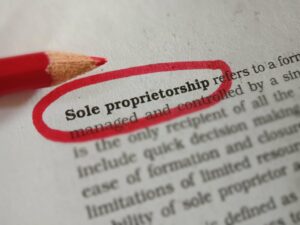- Share on :
- More
Retained Earnings: Definition, Formula & Example

Reinvesting profits back into the company can help it grow and become more profitable over time. Many firms restate (or adjust) the balance of the retained earnings (RE) account as they record the effects of events that have their origins in earlier reporting periods. As such, some firms debited contingency losses to the appropriation and did are retained earnings an asset or liability not report them on the income statement. Retained earnings provide a much clearer picture of your business’ financial health than net income can. If a potential investor is looking at your books, they’re most likely interested in your retained earnings.
- Retained earnings are reclassified as one or more types of paid-in capital under two general circumstances.
- Your accounting software will handle this calculation for you when it generates your company’s balance sheet, statement of retained earnings and other financial statements.
- Any item that impacts net income (or net loss) will impact the retained earnings.
- If your company pays dividends, you subtract the amount of dividends your company pays out of your retained earnings.
Formula For Retained Earnings
![]()
You can learn more about FreshBooks by visiting their official website. Retained earnings serve as a link between the balance sheet and the income statement. This is because they’re recorded under the shareholders equity section, which connects both statements.

Is retained earning current liabilities?
Accordingly, the normal balance isn’t an accurate measure of a company’s overall financial health. Retained earnings are the portion of a company’s net income that management retains for internal operations instead of paying it to shareholders in the form of dividends. In short, retained earnings are the cumulative total of earnings that have yet to be paid to shareholders.
Let Skynova Help You Manage Your Small Business Bookkeeping

Now, if you paid out dividends, subtract them and total the ending balance. This is the new balance in the retained earnings account and it will be displayed on the balance sheet as of the last day of the current accounting period. When total assets are greater than total liabilities, stockholders have a positive equity (positive book value). Conversely, when total liabilities are greater than total assets, stockholders have a negative stockholders’ equity (negative book value) — also sometimes called stockholders’ deficit. This means that the value of the assets of the company must rise above its liabilities before the stockholders hold positive equity value in the company. This includes all dividends paid out to shareholders during the period.
Shareholder Equity

Shareholder equity represents the amount left over for shareholders if a company pays off all of its liabilities. To see how retained earnings impact shareholders’ retained earnings equity, let’s look at an example. A company reports retained earnings on a balance sheet under the shareholders equity section. It’s important to calculate retained earnings at the end of every accounting period.
What is a statement of retained earnings?
Essentially, retained earnings are balances accumulated due to profits or losses. They do not represent assets or cash balances that companies have kept. However, it includes various stages based on the elements of the retained earnings formula. When a company conducts business, it will generate profits or losses. When revenue is shown on the income statement, it is reported for a specific period often shorter than one year.
FAQs About Retained Earnings Calculation
Retained Earnings are an important part of a company’s finances, as they are the cumulative amount of net income that is retained over time. They are typically classified as neither a liability or an asset on the balance sheet, depending on the company’s intention for the funds. Liabilities are obligations that must be paid, while assets are resources that can be used to generate value.


